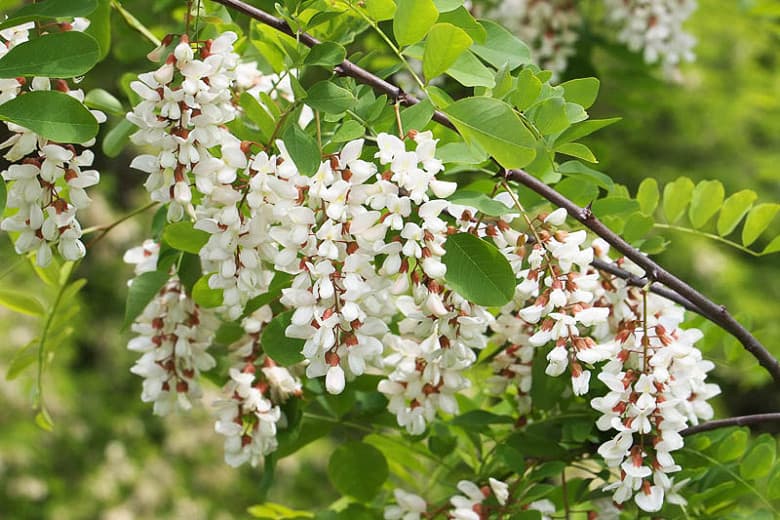
Black locust produces a large amount of root suckers to form quite dense thickets that exclude native vegation.
Black locust is toxic to humans and can cause discomfort and irritation, but is not life-threatening. All parts of the plant are poisonous, especially the pods, seeds, bark and leaves. It can cause dizziness, nausea, vomiting, diarrhoea, convulsions and drowsiness.
What to do if poisoning occurs:
Spiny deciduous tree to about 17 m high. Leaves are bright green, divided into leaflets with spines on stems. Pale flowers droop down in clusters. Seed pods are 3 – 8 cm long and reddish brown in colour.
Home › Invasive species › Black locust